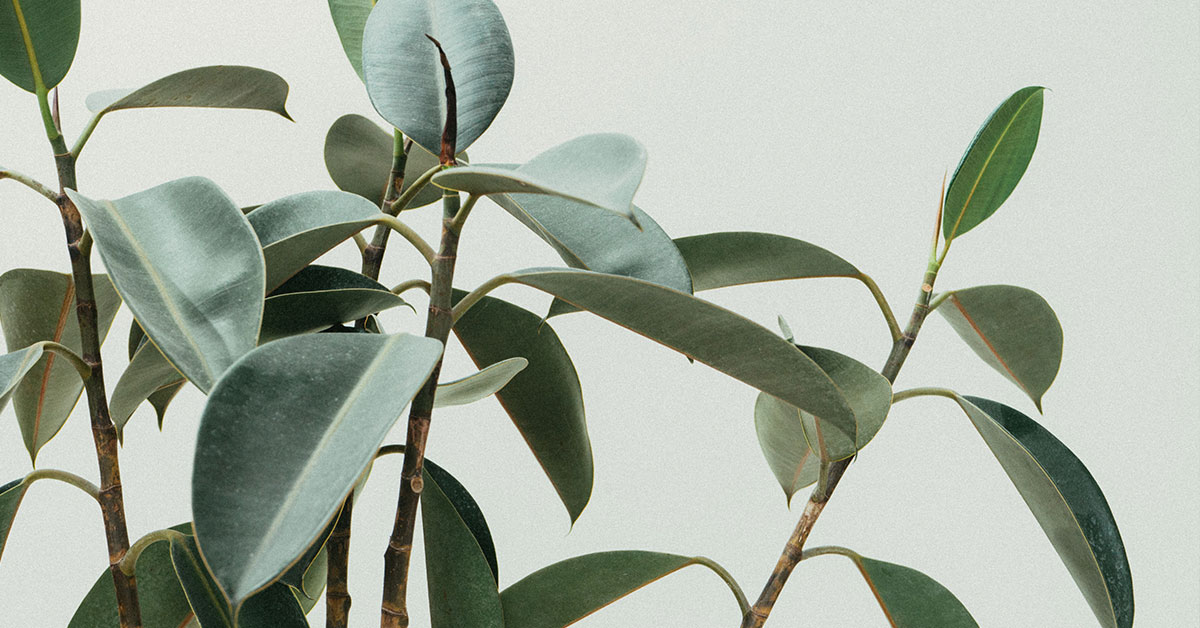Rubber plants are some of the most unique-looking plants you could have around your household. They may also be one of the trickiest house plants you could have as well. The growth of the plant is very upright and their deep green leaves have this interesting glossy texture to them. The appearance of this plant makes it almost look like it’s fake. While most rubber plants thrive in zones 10-11, they can be grown indoors as well if you live in a different zone and climate. Owning a rubber plant can be pretty easy for the most part. However, rubber plants can be prone to various diseases and pests. This may be why your rubber plant leaves are curling.
Rubber plant leaves curling: common causes
There can be several different reasons why your rubber plant’s leaves are curling. One very common issue is poor watering conditions of the plant. A rubber plant can be affected by either overwatering or underwatering. To solve this, allow your plant’s soil to dry out before watering again. Once it’s completely dry, deeply soak water into the soil until water leaks from the drainage hole of the container. If your soil is moist, do not water again until a couple of days have passed or is dry to the touch. This helps prevent root rot. You will need even less water during the fall and winter seasons, to maintain the moistness of the soil.
Pests
There are a handful of pests that love to invade rubber plants whenever they get the chance. Small insects like spider mites, scale, and aphids will cling to rubber plants. It may be a good idea to carefully check under the leaves for any bugs that may be on the stem. Depending on how curled the leaves are, you might have to carefully unroll them. If pests are present, you can usually a plant-friendly spray or make your own without fragrances, coloring, or other harmful additives. Be sure to remove your rubber plant from any exposed sunlight if you decide to spray your plant.
Improper humidity
One overlooked yet crucial factor for rubber plants is the amount of humidity they are receiving. If your rubber plant is kept indoors, you may have to adjust the humidity levels in your home. Without having to buy a humidifier, you can use a humidity tray instead. You can make one easily by finding a shallow tray, filling it with a layer of loose gravel/pebbles, and placing your rubber plant on top of the tray. Adding enough water so that the plant is high enough that the water can’t reach inside. If your rubber plant is resting against water full, you can actually cause your plant to rot from inside.
Temperature shock
If you have recently adjusted the temperature of your house or have moved the plant to a different environment, this can cause your plant’s leaves to curl. Excessive heat and cold can have a direct effect on how your rubber plant’s going to maintain itself. Refrain from placing your rubber plants by any excessively hot or cold windows. Indirect sunlight is ideal compared to being beamed with hot evening sunlight.
Chemicals
Another overlooked reason why your rubber plant leaves are curling be due to harmful chemicals or cleaning products you’re using around the plant. Cleaning products can clog the pores of the leaves which can cause them to curl. Simply use a moist cloth to wipe down leaves from dust to make them glossy again. Another good way to prevent your rubber plant from being exposed is to never use pesticides around your plant. Rubber plants are extremely susceptible to gas fumes so refrain from using any kind of products that are of the like around the plant.













